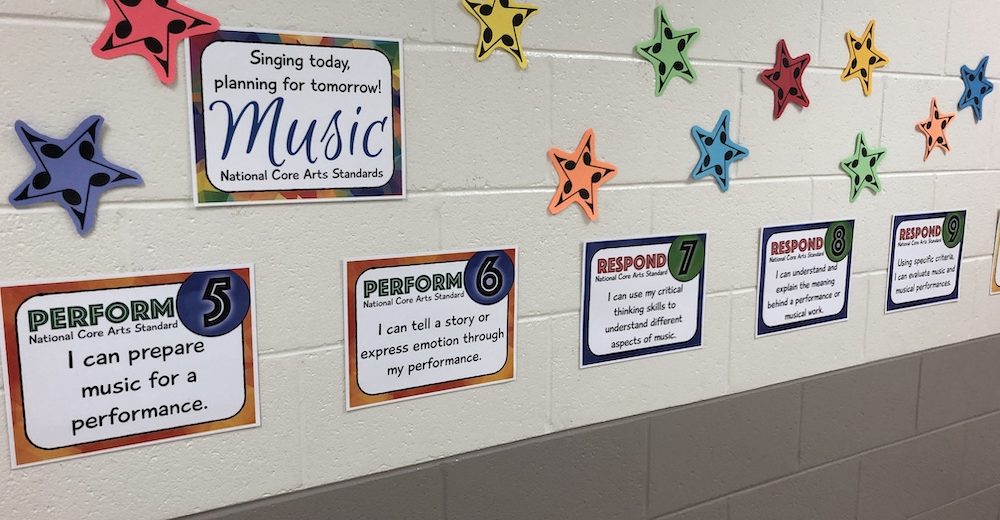
It Starts with the Standards – Advocacy for Elementary Music
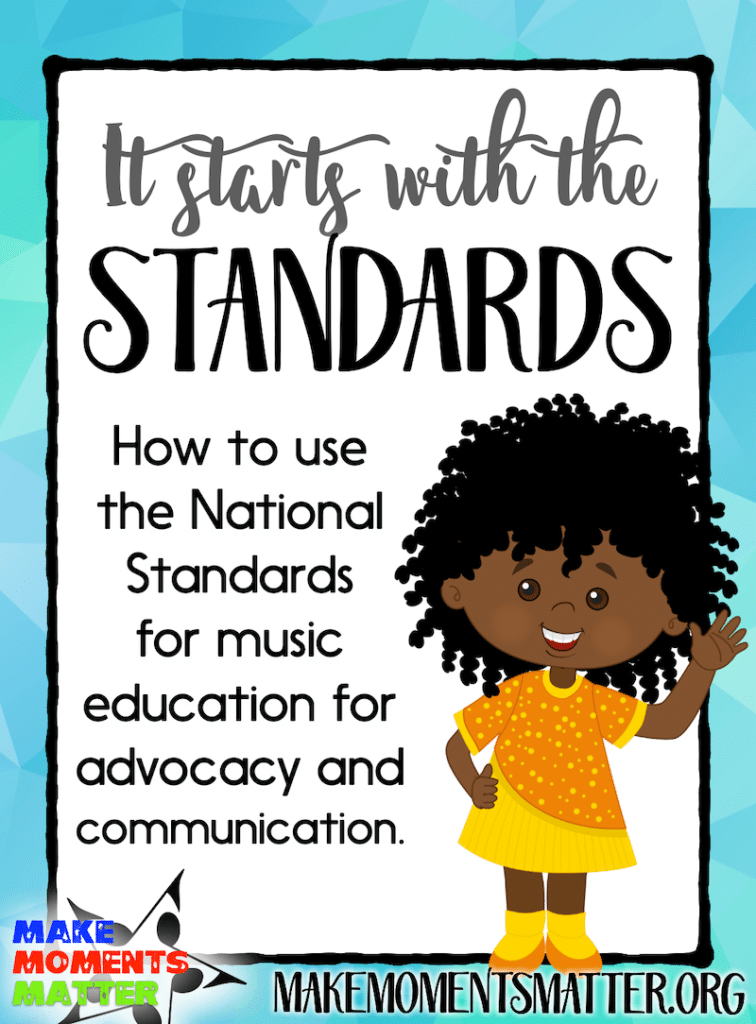
A few years ago I was in the hallway after school fumbling with butcher paper, bulletin board border, and a freshly laminated set of posters based around the National Standards for Music Education (at the time I was still using the NAfME standards from 1994). I was halfway done with the bulletin board and was getting really agitated with a jammed stapler when my principal walked up. “There are National Standards for Music Education?” she asked as she scanned the bulletin board.
I could not believe what I was hearing. Wasn’t she, my principal, supposed to know about the curriculum, scope, and sequence of all the subjects taught in her very own school? Shouldn’t she know what I’m teaching every day? I had my “50 ways that music education aids in brain development” speech all ready to go. But when I turned around to answer my principal she said, “Hey! ‘I can compose and arrange music within certain guidelines.’ That’s exactly what kids were doing with popsicle sticks when I observed you the other day.”
It hit me like a ton of bricks. It wasn’t that my principal didn’t care, it’s that she didn’t know. She was in the loop about upcoming performances, helped me purchase new instruments, and even took time after school to work through adapting centers for a recorder unit. She was absolutely a supporter she just wasn’t well informed. And that was on me.
Does my school community know what happens in music class?
After that interaction with my principal I had to have a hard conversation with myself about whether I was really doing my job to teach the whole school community about what happens in music class. Would an outsider be able to identify what students learn in my room? Do parents know what their kids do every day in music? Could another teacher explain parts of my curriculum?
I thought about other specials subjects like art, P.E., library, and STEM. I had the basic understanding of what most of those teachers did in class but I couldn’t have told you what units they were working on or any standards they covered. I realized the same was probably true of my own classroom for any outside observer. I didn’t really do a good job of helping others know what went on in the music room.
Starting with the Standards
I went back to my hallway bulletin board and started to really imagine how I might use the National Standards for Music Education to teach people in my school community. The Standards boil down all the songs, games, and lessons that I taught into powerful statements which explain the essential tasks behind the activity. All I had to do was help teachers and students see the Standards at work in my classroom through concrete examples.

I took some markers and started to write on the paper next to each poster. Near “I Can Sing by myself and with others,” I listed out some of the songs we were learning in each grade level. Beside the poster “I can listen to, analyze, and describe music using music vocabulary,” I wrote some musical terms that we had learned in class and gave examples of famous works we listened to and analyzed like Peter and the Wolf and Carnival of the Animals. Next to “I Can Perform on instruments by myself and with others,” I included the names of instruments we played and how we used them: xylophones to accompany, recorders for melody, tone blocks to keep the beat, and glockenspiels for improvisation.
The next day I could hear students telling stories to parents and teachers about their favorite songs and the instruments and experiences that went along with each one. Eventually I added pictures to the bulletin board: action shots of students singing, dancing, playing instruments, and composing. As the year went on I included artifacts from the classroom like student compositions and reflection worksheets. The collage of images, learning targets, and stories continued to grow and spark conversations with students, colleagues, and parents.
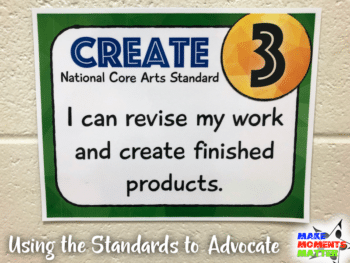
The new standards for music education (NAfME 2014) offer an exciting opportunity to connect with other teachers and subjects in our building. These revised standards were written to emphasize the actual processes in which musicians engage when creating, performing, and responding to music. There are some really helpful resources on the NAfME website to help educators understand the Standards including explanations of each concept with essential questions and definitions.
Using the language of the Standards helps other educators make connections and find value in the concepts we teach. We don’t just sing songs and play games in music class. The music-making process is so much more involved. We evaluate and refine musical ideas, share creative work, analyze musical structures, self-evaluate performances, synthesize and relate knowledge and personal experiences to music, and more.
Creating Conversations and Teaching the Whole Community
We get so caught up in lesson plans and day-to-day stress that we often don’t take a step back to get perspective. Our job is to teach the students about music but also to educate our school community about music, what we teach in our classrooms, and why that’s important. If we don’t take the opportunity to explain our standards and learning targets, then we shouldn’t expect our community to have a clear picture of what we teach.
At my end-of-year evaluation my principal made a point to talk about my bulletin board and how she really valued the details and information that I included. “I’m always impressed with student performances,” she said, “and I love that students sing songs from class on the way to the bus or on the playground. I know they love music, but now I can understand the deep connections they’re making and what goes on behind the scenes.”
It took a jammed stapler and conversation with my principal for me to realize that the opportunity for advocacy was right there waiting for me. All I had to do was start with the Standards and open the door for conversation.
If you like the National Standards posters featured in this blog post you can find them here: National Standards and I CAN Statements – Geometric Theme. Find all my National Standards and I CAN resources when you click this link.
This article first appeared in the Missouri School Music Magazine – a publication of the Missouri Music Educators’ Association. Volume 73 No. 3, Spring 2019

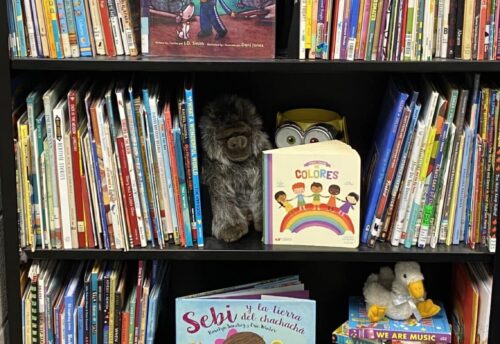
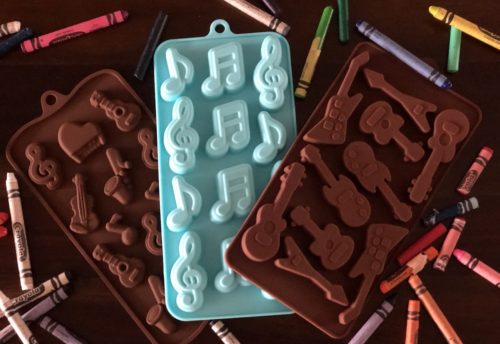
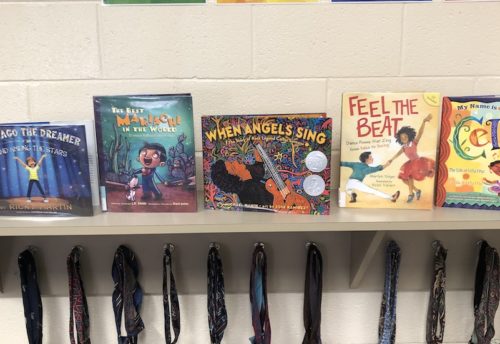
Pingback: It Starts with the Standards – Advocacy for Elementary Music | Make Moments Matter - MusicTech.Education